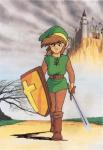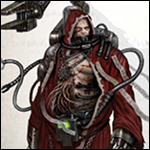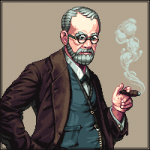I know I'm late to the punch here, but I wanted to drop in and say that this is a very noble venture, and I hope that you continue it.
However, though I totally understand the concept, I'm not really sure how you're implementing the gradients within the palette. In order to really illustrate the technique of your palette structure, you may have to show multiple gradients and point out where they are within the palette.
For instance, it's totally obvious where the brown gradient and the green gradient are. Just look at the two rows they appear on, and imagine skipping whatever colors are too yellow/grey/red whatever to fit what you are trying to color.
But if you are constructing, for instance, a yellow/gold gradient, or a purple gradient, it is less obvious which colors are where. You might have to hop around from one row to another in order to construct a purple gradient, or somesuch.
I am fully confident that this is possible in ZC. What you will be proving, Linkus, is whether it can be PRACTICAL. I am hoping that it can. Because if it is practical, that means that a fully 8-bit tileset that doesn't rely on C-set switching will, in fact, be possible.
Well, until you run out of tile space from all the multiple instances of the same tiles recolored in 8-bit, anyway......

Project Chromosome
Started by
Linkus
, Oct 25 2010 10:57 PM
24 replies to this topic
#16

Posted 22 November 2010 - 06:31 AM
#17

Posted 22 November 2010 - 01:55 PM
Sure, here's a demonstration:

And here's the process of going about it:

And here's the process of going about it:
- Here's three gradients not ready for conversion into "The Eight" - However this process will soon fix that!
- Look at the palettes you have. Which is the "dominant one"? I chose purple because it can leave a nice ambiance when going into the darker colors, so the yellow and orange will lose the darkest color on their gradient. Another thing is to look at certain gradients and consider if they can merge into another before merging into the dominant one - the yellow can merge into the orange, so the second-to last color can be lost. Finally, there's colors you might have little use of, so I took out the brightest purple - If I do need to use it, there's the overflow colors in the middle of the palette. With the removal of these colors, now the gradients are ready for conversion into "The Eight"!
- Arrange the brightest colors according to use - Here, the gradients are numbered and placed as if each column from the last setup was rotated and attached to the last one. The ones with a wrench icon over them need to be tweaked so that they merge smoothly into the next or dominant gradient - See #4 for a setup example on how to do this without needing to do much guesswork.
- the "gradients" after conversion to "The Eight" palette structure. Note that orange and yellow actually gained a color in the process at the cost of purple's!(BTW, ignore the bottom arrow on the middle column of colors - My mistake
 )
)
#18

Posted 22 November 2010 - 10:03 PM
You could save a ton of space for more colors if you got rid of the the 2 grass colors in every cset. The transparent color could also be utilized as an extra color in 8-bit mode. All of this seems pretty useful though.
#19

Posted 22 November 2010 - 10:21 PM
Well, my goal is to make a palette structure that still utilizes 4-bit usage, but gives an appearance of 8-bit color; you see, I don't think the SNES and GBA actually used 8-bit color, however I do believe palette bit shift was used on the SNES...
#20

Posted 30 January 2011 - 03:19 PM
It has been three months since its release.
Was it a success? What was the worst problem with it? Did people expect a tileset rather than a palette structure? Is there something that I missed?
This is what I'd like to know, so chime in on your opinion...
Was it a success? What was the worst problem with it? Did people expect a tileset rather than a palette structure? Is there something that I missed?
This is what I'd like to know, so chime in on your opinion...
#21

Posted 31 January 2011 - 05:16 AM
I haven't really been in a position where I had enough time to mess around with something like this. But I have a feeling that I know what the general response was, even if people aren't jumping to say so.
Most of the people who work with ZC probably don't want to put the same amount of time and thought into the graphical aspects as you. This is partially due to time investment, but largely due to skill. What you are attempting to do is a high-difficulty task. Even if a person doesn't need special training to do it, it's rather difficult and time-consuming, and it requires a LOT of creative, practical thinking that many here aren't that experienced with.
I know you're going to be frustrated by the lack of attention this has gotten, knowing that it could greatly benefit tileset production in the ZC community. However, it'll only benefit the community if people take it seriously enough to help develop it AND to use it to full potential. That means tileset makers, at the very least. If you want to tackle this project, I suggest seeking out specific people who have shown enough prowess for you to think that they might care to help. That includes people to give feedback; you'll need them too.
Personally, I understand what you're going for. I've spent quite a bit of time on palette construction; far more than most people would ever want to dedicate to something with such vague benefits. I don't mean to sound self-centered... but if I'm hesitant, I feel that most people just wouldn't feel comfortable tackling it at ALL. I say that purely because of the time investment it might require.
One possibility would be to team up with someone who is making a tileset. A tileset would be a great vehicle for a palette standard... in fact, it's pretty much the ONLY way to implement a standard around here.
Most of the people who work with ZC probably don't want to put the same amount of time and thought into the graphical aspects as you. This is partially due to time investment, but largely due to skill. What you are attempting to do is a high-difficulty task. Even if a person doesn't need special training to do it, it's rather difficult and time-consuming, and it requires a LOT of creative, practical thinking that many here aren't that experienced with.
I know you're going to be frustrated by the lack of attention this has gotten, knowing that it could greatly benefit tileset production in the ZC community. However, it'll only benefit the community if people take it seriously enough to help develop it AND to use it to full potential. That means tileset makers, at the very least. If you want to tackle this project, I suggest seeking out specific people who have shown enough prowess for you to think that they might care to help. That includes people to give feedback; you'll need them too.
Personally, I understand what you're going for. I've spent quite a bit of time on palette construction; far more than most people would ever want to dedicate to something with such vague benefits. I don't mean to sound self-centered... but if I'm hesitant, I feel that most people just wouldn't feel comfortable tackling it at ALL. I say that purely because of the time investment it might require.
One possibility would be to team up with someone who is making a tileset. A tileset would be a great vehicle for a palette standard... in fact, it's pretty much the ONLY way to implement a standard around here.
#22

Posted 31 January 2011 - 06:04 AM
I'll have to give this a go sometime. A couple of potential problems:
1. This really forces your hand with the level palettes. In order for this to work, the color scheme has to mesh in such a way as to have each gradient share significant colors without the viewer noticing. It can be done, but then when you get to work on alternative flavors of the palette you find your newly-envisioned color scheme doesn't mesh in the required way. I don't see any way to have much flexibility without dumping the shared-gradient idea altogether.
2. It'd be an absolute nightmare to work with this thing by hand! Doing proper recolors would require working with a modified version of the palette with redundantly sorted gradients (but the same RGB values), then having the computer collapse the color indices into the ZC form. This makes working with ZC's native editor next to impossible, but personally I never use it anyway. Still though, I don't like the idea of making external programs required.
1. This really forces your hand with the level palettes. In order for this to work, the color scheme has to mesh in such a way as to have each gradient share significant colors without the viewer noticing. It can be done, but then when you get to work on alternative flavors of the palette you find your newly-envisioned color scheme doesn't mesh in the required way. I don't see any way to have much flexibility without dumping the shared-gradient idea altogether.
2. It'd be an absolute nightmare to work with this thing by hand! Doing proper recolors would require working with a modified version of the palette with redundantly sorted gradients (but the same RGB values), then having the computer collapse the color indices into the ZC form. This makes working with ZC's native editor next to impossible, but personally I never use it anyway. Still though, I don't like the idea of making external programs required.
#23

Posted 22 March 2011 - 03:19 AM
Pardon me for doing a little bit of gravedigging, but seeing the nature of this project, I think it's more appropriate than starting a new thread.
Linkus, I like your idea, but you said that this had been "released," and yet all I can find here is basically an idea. I understand the concept behind it, but I find the details of actually constructing a palette out of it to be very difficult. And mind you, I think I've probably spent more time on palette structure than any other tileset-builder.
I think that such a palette would be very beneficial for a future Minish Cap tileset, but I doubt I could formulate it myself. Is it possible you could do some more work on implementing this idea to create a general-purpose 8-bit palette out of it? Color placement is significant, too.
Linkus, I like your idea, but you said that this had been "released," and yet all I can find here is basically an idea. I understand the concept behind it, but I find the details of actually constructing a palette out of it to be very difficult. And mind you, I think I've probably spent more time on palette structure than any other tileset-builder.
I think that such a palette would be very beneficial for a future Minish Cap tileset, but I doubt I could formulate it myself. Is it possible you could do some more work on implementing this idea to create a general-purpose 8-bit palette out of it? Color placement is significant, too.
#24

Posted 02 April 2011 - 05:30 AM
It has been three months since its release.
Was it a success? What was the worst problem with it? Did people expect a tileset rather than a palette structure? Is there something that I missed?
This is what I'd like to know, so chime in on your opinion...
My problem was that I didn't quite knew how to use "the 8" properly. I didn't know how many different colours (for example, 2 greens, 2 browns, 1 blue, 1 purple etc) there where supposed to be and that kinda confused me. I also didn't knew wether it was for example intended that green could change into purple the darker the gradient gets (kinda like SD3) and so on. It would've been helpful if you posted an example where you've shown how the 8 can be lined up to make different colour-sets. Just by guessing, it was kinda confusing and I was afraid I might do something wrong which I would've regretted later (resulting in the need to recolour every tile or something).
#25

Posted 02 April 2011 - 09:38 AM
Part of this project's "failure" is its extreme niche usage in the ZC community. Out of the hundreds of quests, very few (if any) have been made with something requiring a more advanced palette than DoR. This could be very useful to custom tileset makers, but there are so few of those. It could also find application in those trying to rip more color-intensive graphics, but even then you're sometimes boxed into certain colors and gradients that may not work well with this system.
Overall, it's another case of a great idea just not having a lot of demand.
Overall, it's another case of a great idea just not having a lot of demand.
1 user(s) are reading this topic
0 members, 1 guests, 0 anonymous users









